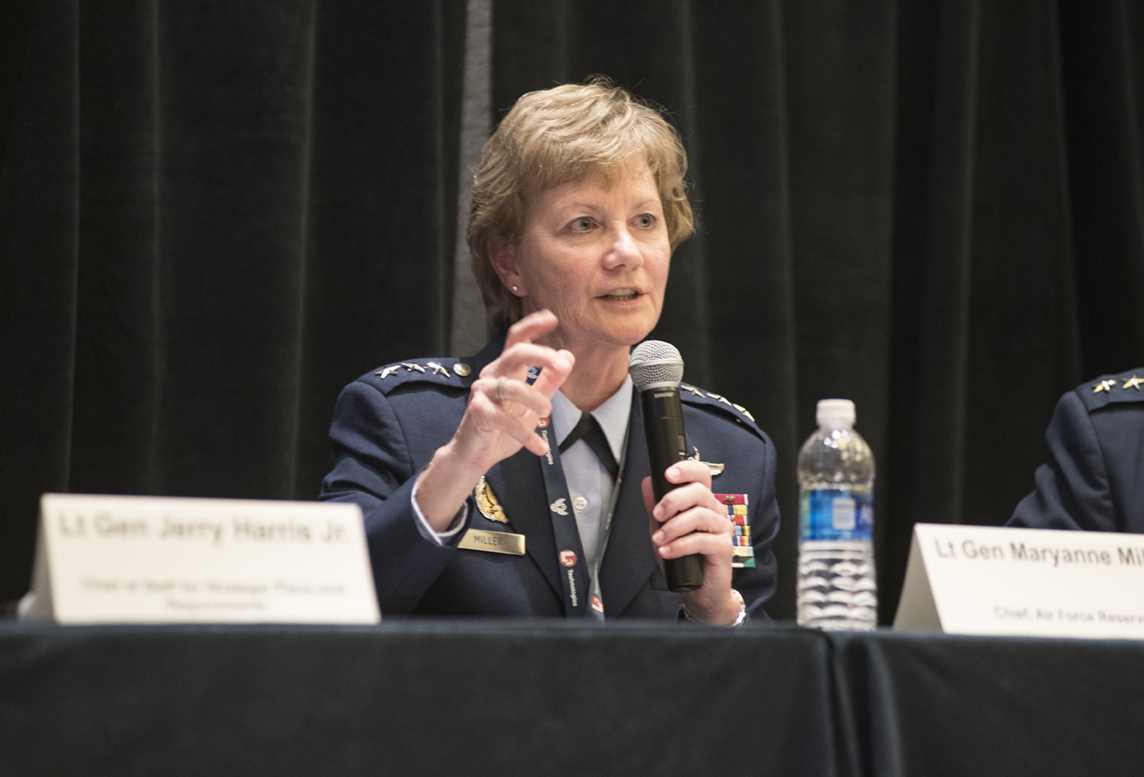
Lt. Gen. Maryanne Miller, Chief of Air Force Reserve, speaks at AFA's Air, Space & Cyber Conference in National Harbor, Md., on Sept. 20, 2017. Staff photo by Mike Tsukamoto.
Congress wants airmen to be able to move from back and forth from the Active Duty to Guard to Reserve, but policies are holding such fluidity at bay, said Lt. Gen. Jerry Harris Jr., Chief of Staff for Strategic Plans and Requirements.
“A lot of the issue we have are actually policy issue or law,” he said. “We could probably get the authority from Congress to say, ‘When you deploy, you deploy, and you should all look alike, have the same benefits.”
While Harris said “that’s where” he thinks the Total Force should go, he pointed out differences between the services.
“If we’re blended so much that no one can tell us apart, that may be a little too far,” Harris said. Day-to-day operations should be separate despite attractive benefits of combat inclusivity.
“You look at the warfighter, you look at the squadron level organization we have, and we’re trying to increase the lethality and the readiness,” said Lt. Gen. Scott Rice, director of the Air National Guard. “We have the same training standards, we have the same requirements.” It makes sense that all uniformed service members be the same.
However, it’s “against the law” for Active Duty service members to act as police stateside, Rice said. “But you can use Guard forces.” Articulating that difference on a federal level is significant, though. As of now, there are 37 different ways I could pay a Guardsmen and get them on duty, Rice said frustratedly.
“You’ve got to be kidding me,” he said. “Even me, I don’t understand all the nuances of all that crap.”
The challenge with integration, said Lt. Gen. Maryanne Miller, Chief of Air Force Reserve, is how to mix fulltime and part-time service members.
“Growing the Active component,” she said, “relieves the tension on us.”
